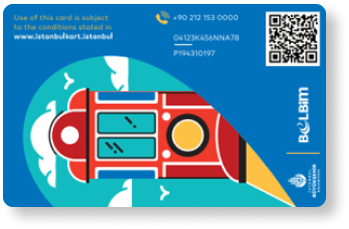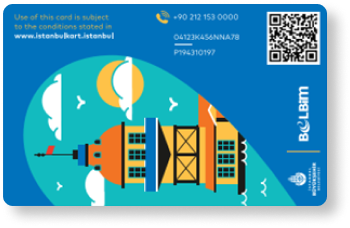
Local Flavors and Dried Fruits of Cappadocia
Cappadocia is a wonderful place with natural and historical places. World-famous fairy chimneys, beautiful hot air balloons flying over, delicious food, and friendly people. Cappadocia is a place you must visit before you die! We know that you have a Cappadocia trip on your bucket list. So, when you are around this magical place, here are some dried fruits, nuts, and other delicacies you must buy. But before we dig in, let’s have a look at the perfect opportunity to save time and money during your trip.
Cappadocia Travel Pass® is one of the best tools for saving money and time while you are traveling through this magical place. The Pass gives you access and special discounts to 35+ amazing attractions so you don’t need to try to find attractions or buy tickets. All you need to do is buy this Pass which is completely online and start using it right away.
Raisins of Cappadocia
Just dried grapes, and yes, the method is the same everywhere on Earth. The soil and elevation of the Cappadocia region allow for a variety of grape varieties, some of which are particularly well suited to drying under the intense Anatolian sun. Especially the black raisins are very much loved in this region. Be warned that they generally contain seeds; nonetheless, if you are not traveling with your younger sibling, it is best to chew and consume them instead of spitting them out. Locals refer to the seeds in particular as "blood producers" despite the fact that they are extremely high in antioxidants. These can be bought and tasted at various Cappadocian markets and they get along great with pumpkin seeds; continue reading.
Pumpkin Seeds as a Delicious Snack
Pumpkin seeds are one of the Cappadocian raisins' best friends, and yes, it is possible to find them at all of the popular tourist destinations in the area. The Cappadocia region is a major producer of pumpkins, and the seeds are traded all throughout the nation. Although they are mechanically removed, hand-extracted seeds are the best. You'll enjoy their flavor of them after they are roasted and sun-dried. Please don't ask why; it's good for bladder health. If you're lucky, you might run upon some locals working on their pumpkins and offer your assistance. Of course, we use pumpkins to make soup, dessert, and other dishes, but in Cappadocia, the flesh is so foul-tasting that even the animals steer clear of them. Instead of being thrown away, pumpkin flesh is used as fertilizer for potatoes that will be sown the next year.
Sour and Sweet: Gilaburu-Guelder Rose Fruit
Although it is a native of many other regions in the world, Viburnum Opulus, often known as Guelder Rose, is not frequently found in these regions' kitchens. In fact, it is not that common across Cappadocia as well. You can get these lovely little red fruits in a few places in Cappadocia, but unfortunately, not everyone is familiar with them. Although it has a fruit-like appearance, it does not taste like a fruit. Since excessive consumption may result in vomiting or diarrhea, it is not advised to consume it fresh and it is also not advised to eat it directly. Residents in Cappadocia soak them in water until the sour flavor goes away before drinking the plant's juice, which is extremely high in vitamin C and greatly benefits the kidneys. If you don't live in Australia, you can find jars of Gilaburu at the little spice shops of Cappadocia. It's worth trying it and bringing it home. The plant itself is extremely lovely, and I hope you locate some with fruits or flowers since it resembles a typical shrub in the winter.
Made by Sun: Dried Apricots
The drying of apricots is something that Cappadocians take extremely seriously. They believe that tons of them should be dried in the summer sun's heat rather than just a few dozen at a time. As a result, if you visit Cappadocia in the summer, you may not only sample the freshest, juiciest fresh apricots but also see how they are traditionally dried in the sun. Simple enough: the apricots are spread out on the ground to be prepared by the sun. Sun-dried apricots, which have an intriguing Cappadocian swirl and are not only delicious but also a very healthy snack, provide important vitamins.
Pekmez and Koftur
The region's rich soils are simply amazing for growing premium grapes. The grapes are used to make wine and pekmez. Beginning in early September and lasting through the end of October, harvest season begins in the area. Pekmez is one of Turkey's most popular and well-known grape, mulberry, and carob (specifically harnup) products. Pekmez, which is made by boiling grape or mulberry juice without the addition of sugar or other food additives, is a concentrated kind of juice with a prolonged shelf life. To make "köftür," fresh pekmez is utilized as a raw ingredient. Fresh pekmez is combined with flour before being baked. After cooling, the mixture is put into trays. The product is cut into slices once it achieves a jelly-like consistency. To keep it from spoiling, it is kept in a dry location. The region consumes a lot of Köftür, which is healthier since it doesn't include crystal sugar. It is a great local delicacy. We know that taking pekmez back home can be hard but you can definitely buy some koftur to take with you!
With its beautiful geography and amazing local products, Cappadocia is a must-see for visitors all over the world. The best way to discover this amazing place is Cappadocia Travel Pass® so don’t wait to learn more about the 35+ attractions included in the Pass. See you in Cappadocia!
FAQ
What is the most popular food in Cappadocia?
In Cappadocia, pottery kebab and manti are the most popular dishes but when it comes to locally grown products, you should buy raisins, sun-dried apricots, and koftur and take them with you!
What can you buy in Cappadocia Turkey?
There are many souvenirs in Cappadocia from handcrafted pottery to local wine or beautiful rugs but we also recommend you buy some raisins, dried apricots, and pekmez to take back home.
Are Turkish dried apricots healthy?
Locally produced and sun-dried apricots of Cappadocia are healthy. Heart, ocular, respiratory, and digestive health are all aided by dried apricots. Dried apricots include potassium, which nourishes cells and organs and aids in muscular growth. Moreover, it helps control blood pressure.
Why are Turkish apricots so good?
Turkish apricots are minimal in fat and calories. Dried apricots weigh 1.4 ounces and only include 6% of the recommended daily calories, therefore they won't make you gain weight. Turkish apricots are a good source of potassium, magnesium, calcium, protein, fiber, and iron. They also taste amazing!




 Travel around Istanbul freely
with Public Transportation Card
Travel around Istanbul freely
with Public Transportation Card
Buy your unlimited Istanbul Public Transportation Card now. We deliver it your hotel before you arrive.





Latest Posts

Why Should You Visit Cappadocia? Updated for 2023
Have you ever wondered where all those lovely photographs of a valley seen from a hot air balloon originate from? Cappadocia, tucked right in the heart of Turkey's Anatolia region, is one of the country's tourism centers, despite its tiny size. And w...

Cappadocia: Hot Air Balloon Flight Guide 2023
Have you ever wondered what it feels like to fly? To float among the birds in the sky and enjoy a bird’s eye view of the gorgeous surroundings around you? Hot air balloons in Cappadocia, Turkey provide just that and more – all the while delivering an...

Underground Cities of Cappadocia
The ancient underground cities of Cappadocia may strike the interest of even the most claustrophobic person! Every year tens of thousands of tourists around the world visit Cappadocia to discover these mysterious caves and learn about their history. ...

How far is Cappadocia from Istanbul?
The distance between Cappadocia and Istanbul is around 730 km (454 miles). This may seem like a lot but think about all the adventures you will experience once you arrive! Furthermore, there are many ways to get there and you will surely find one tha...

Top Things to Do in Cappadocia
Wondering about things to do in Cappadocia? Trying to arrange your trip but there are many question marks. Cappadocia Travel Pass® provides over 25 attractions, with just one pass – so book yours NOW! Here is a list of the main must-do activities but...

The Top 20 Amazing Cave Hotels in Cappadocia
Looking for a unique, one-of-a-kind place to stay in Cappadocia? Why not try a cave hotel? There are plenty of incredible cave hotels in Cappadocia that maintain the region’s history while providing a uniquely modern experience.&n...

Everything About Ihlara Valley
Ihlara Valley, which can be mistakenly written as Ilhara Valley, is a canyon with a depth of around 120 meters and was created by the Melendiz River thousands of years ago. To enjoy this amazing natural beauty, Cappadocia Travel Pass offers yo...

The Top 18 Reasons to Visit Cappadocia
There are many reasons to visit Cappadocia, from its amazing natural beauty to the warm and welcoming natives. Here, you can find 18 reasons to visit Cappadocia! Planning your Cappadocia trip can be exhausting since you may see many different ...

Cappadocia From İstanbul
Istanbul is Turkey’s most crowded city and it has many cultural values because of the historical background of the region. Tourists mostly prefer to start their Turkey journey from İstanbul because of these facts. The distance between Istanbul and C...

Whirling Dervishes Sema Ceremony in Cappadocia
The term "sema" has Arabic roots. It can mean two things. The sky is one, and listening is another. It eventually came to be known as one of the dhikr rituals the Sufis, who practiced Sufism, did by rotating themselves around to the accompaniment of ...

4.8 out of 5 stars
Cappadocia Travel Pass has an average rating of 4.8 /5 from 1079 reviews
Read all traveler reviews →